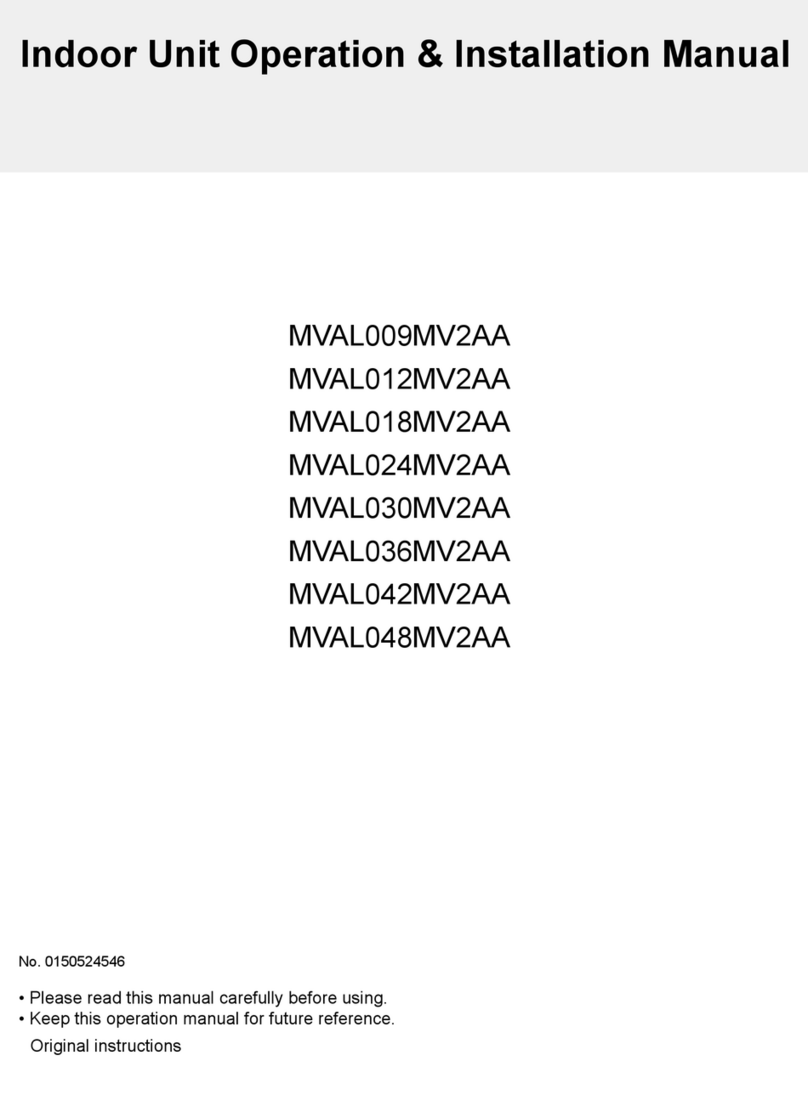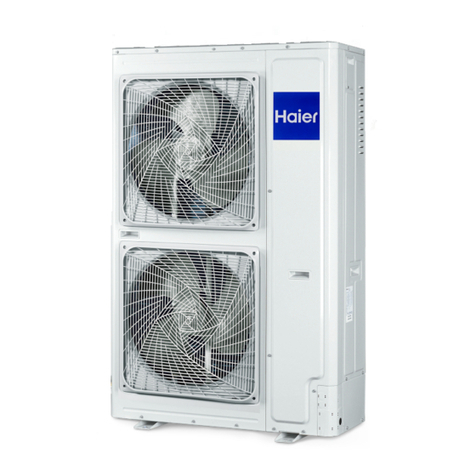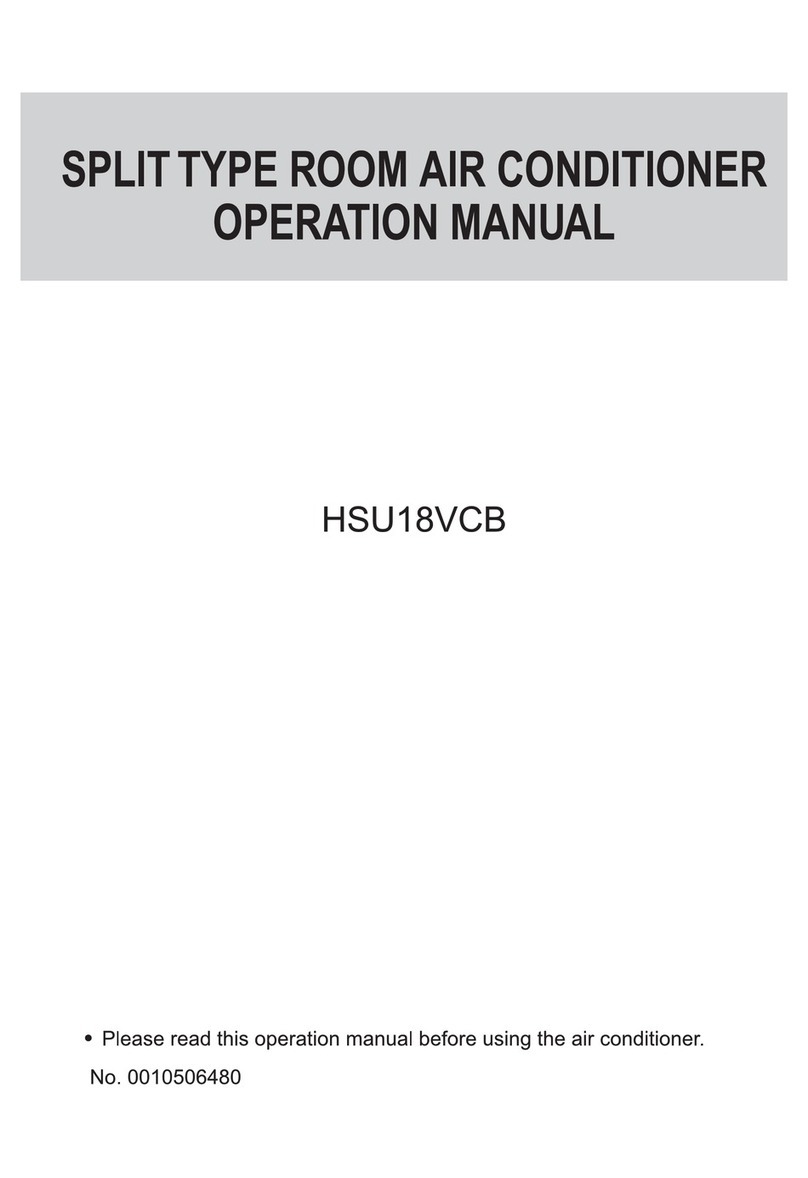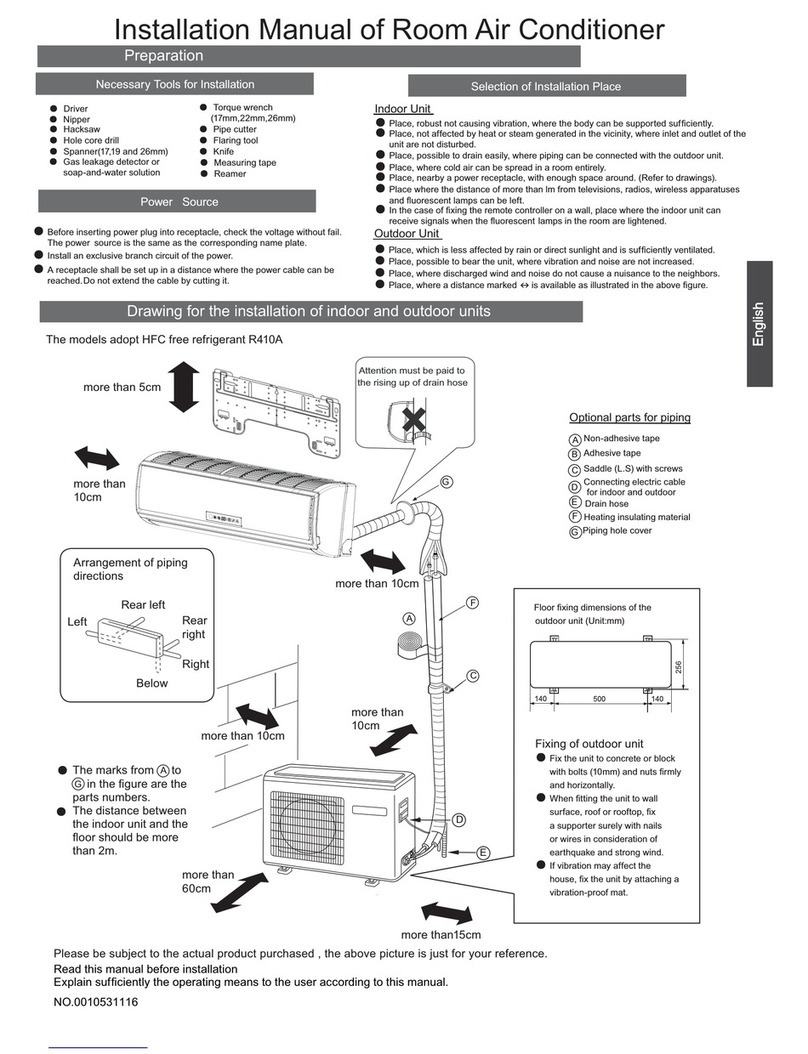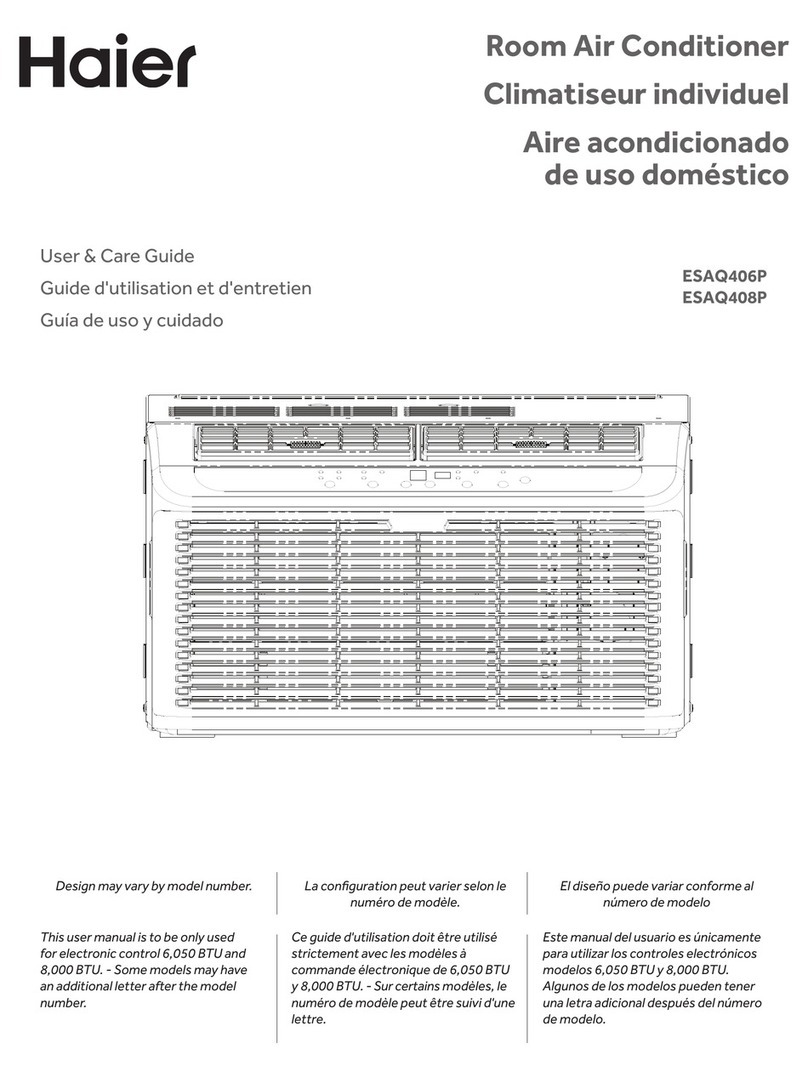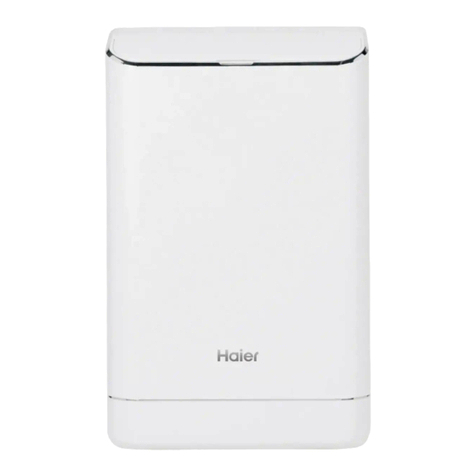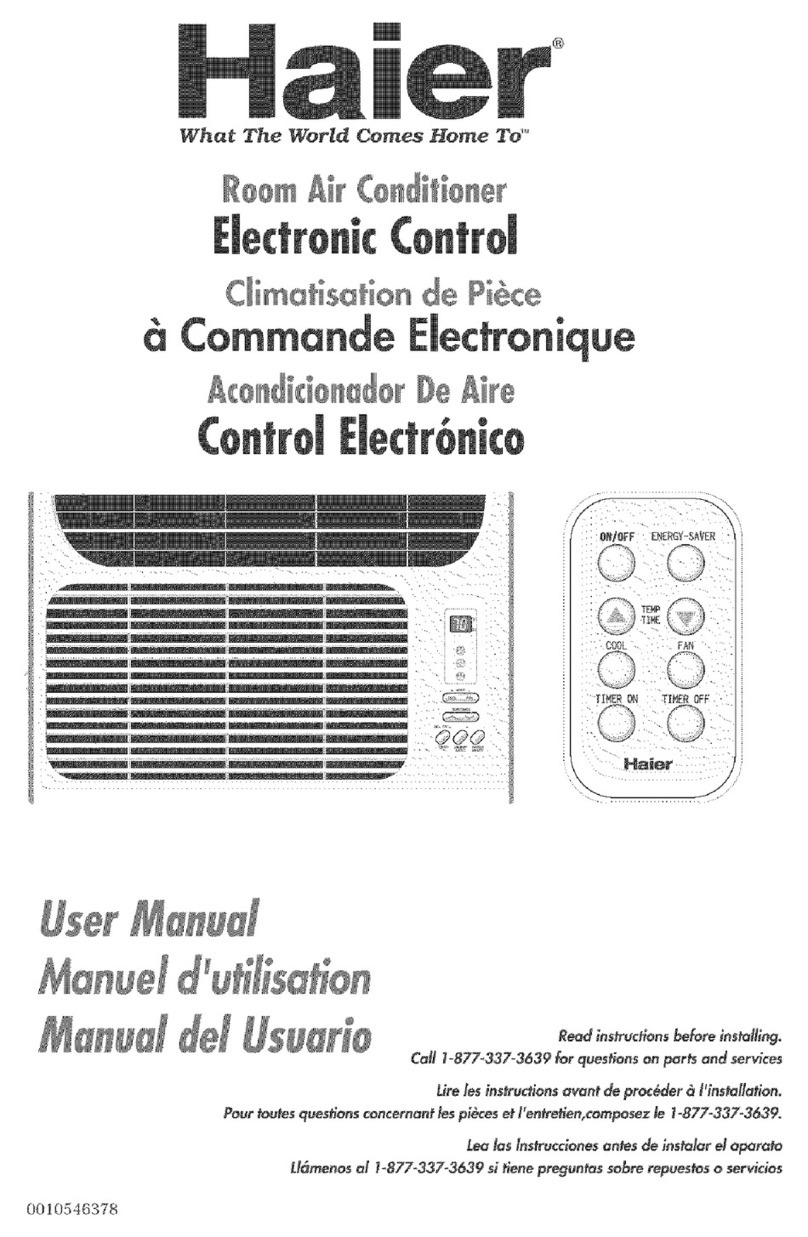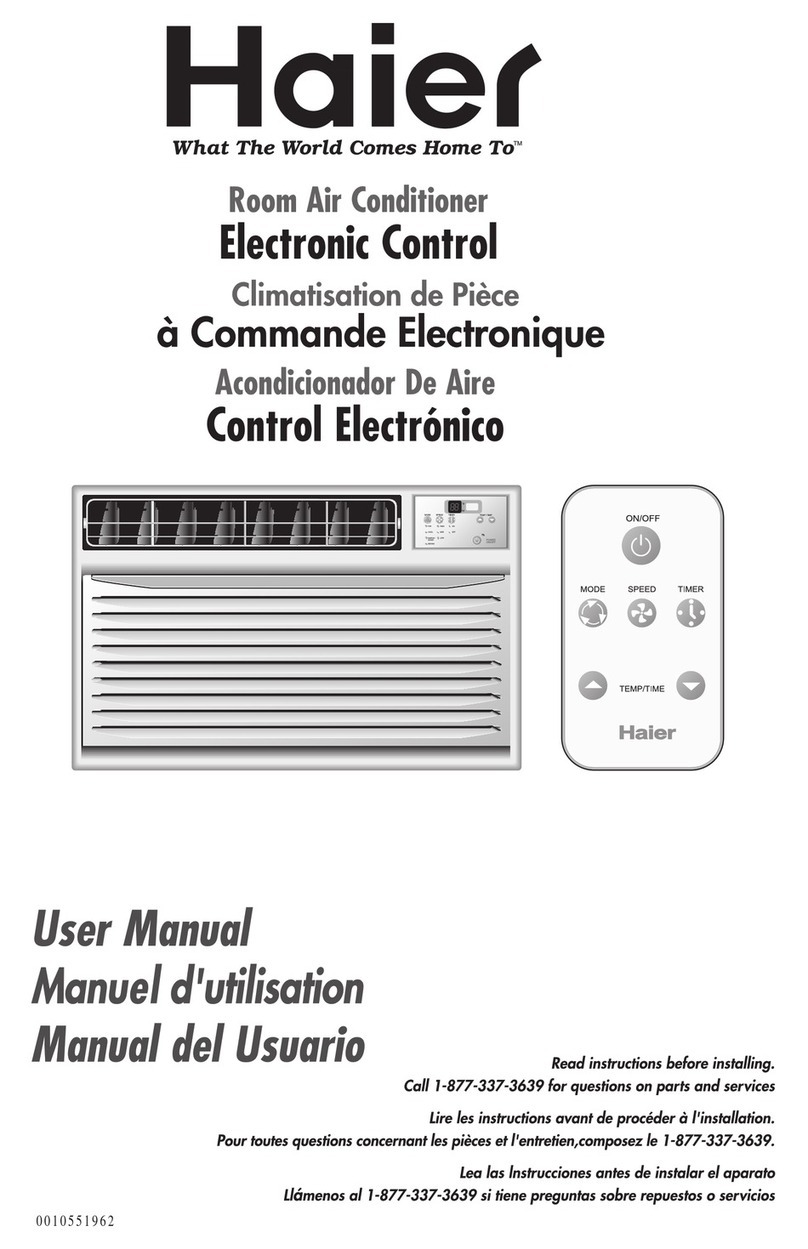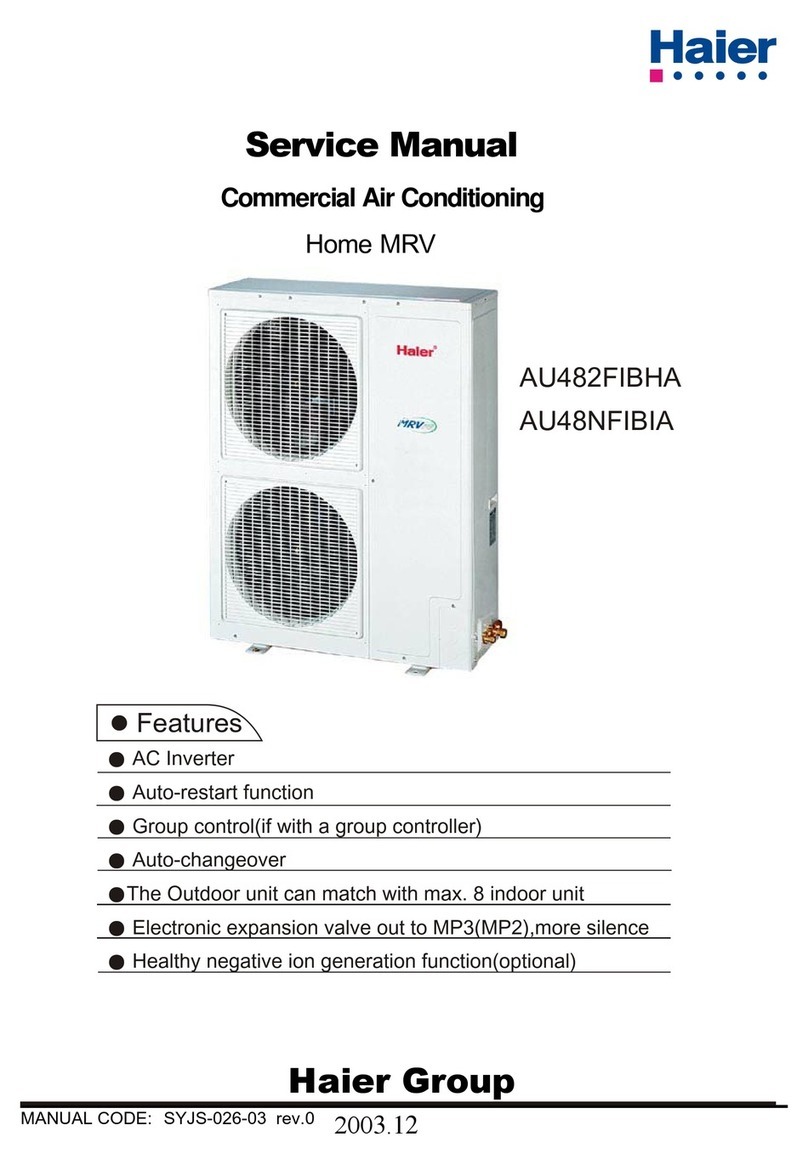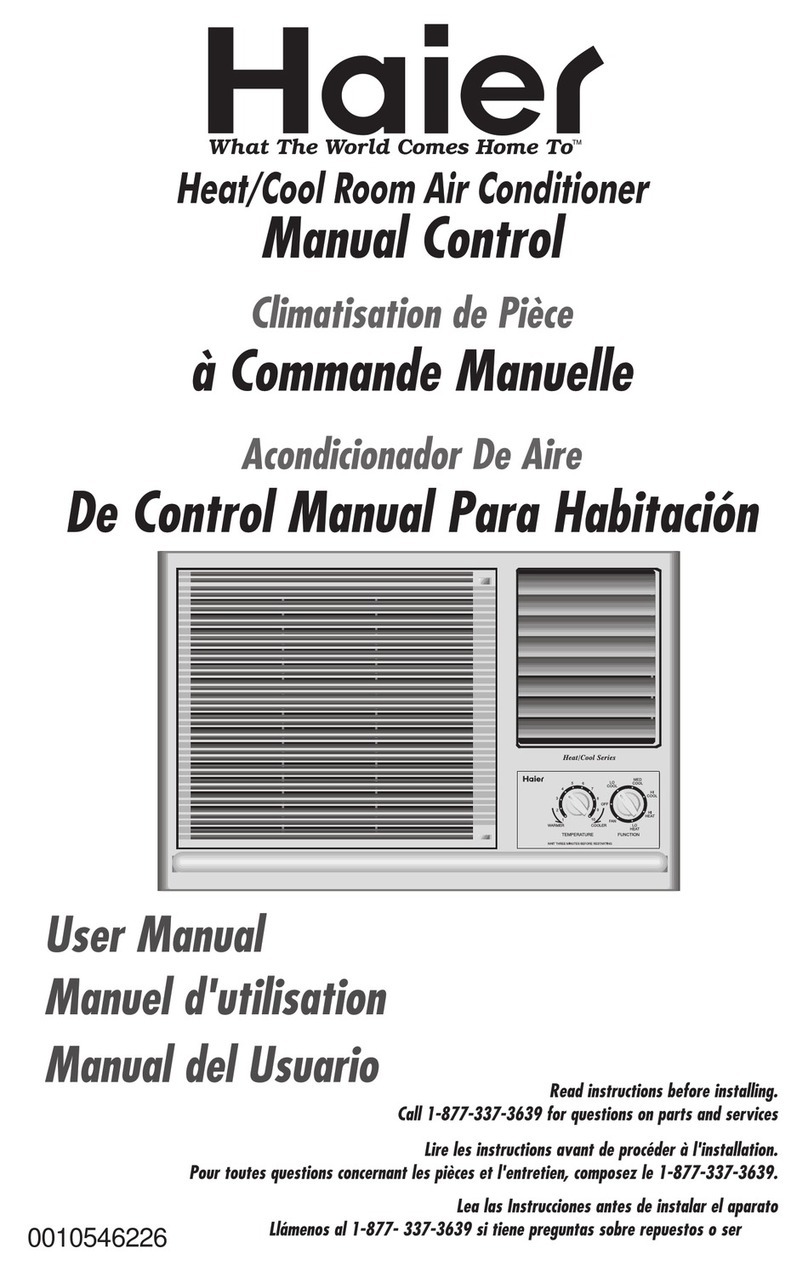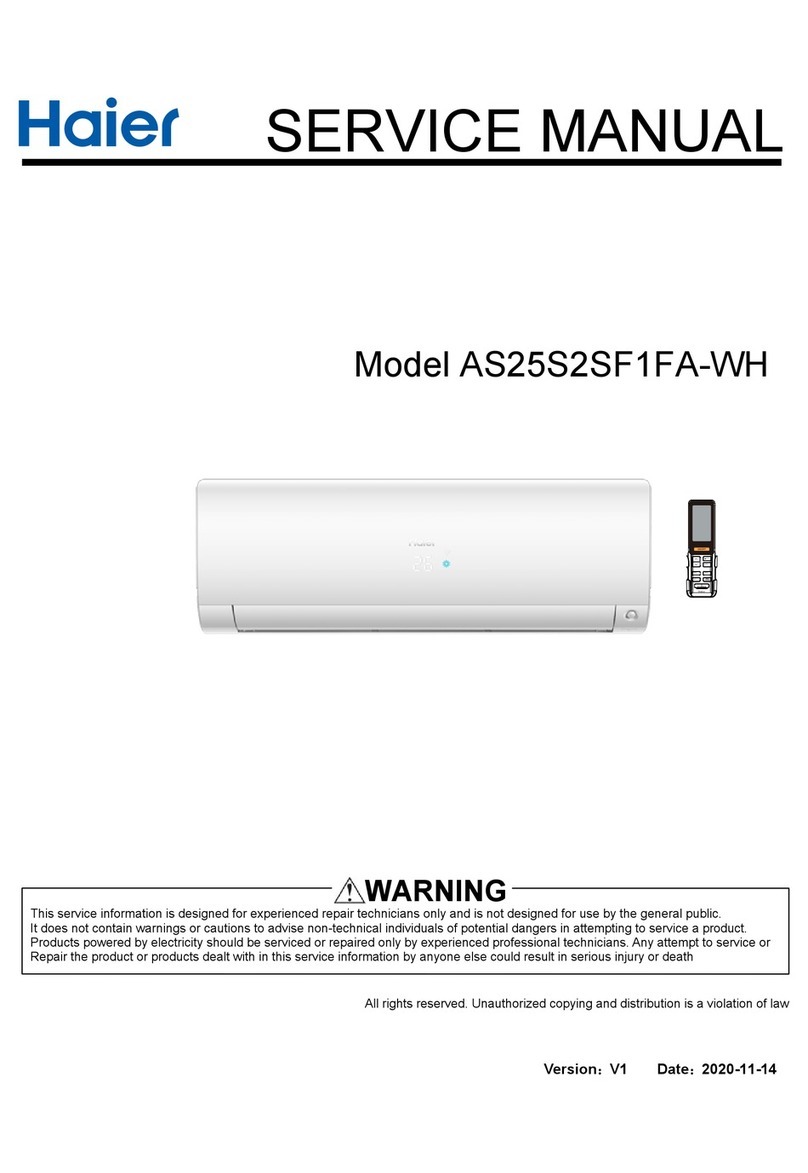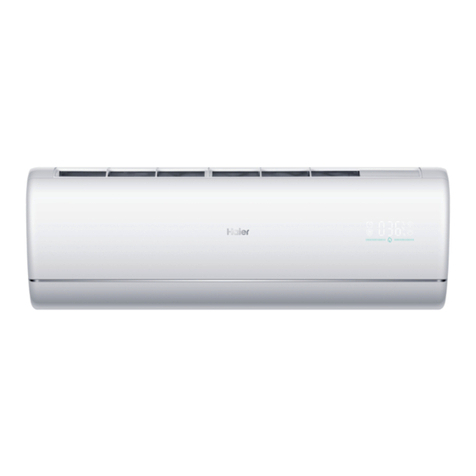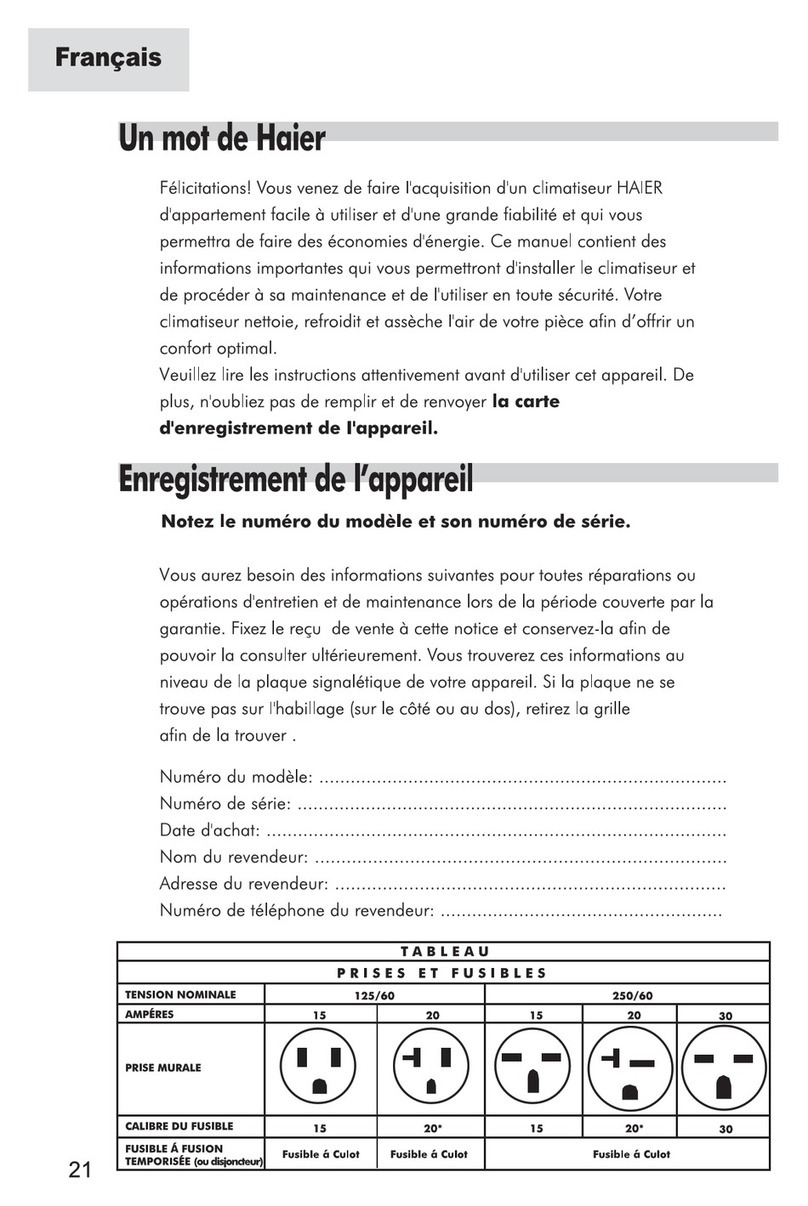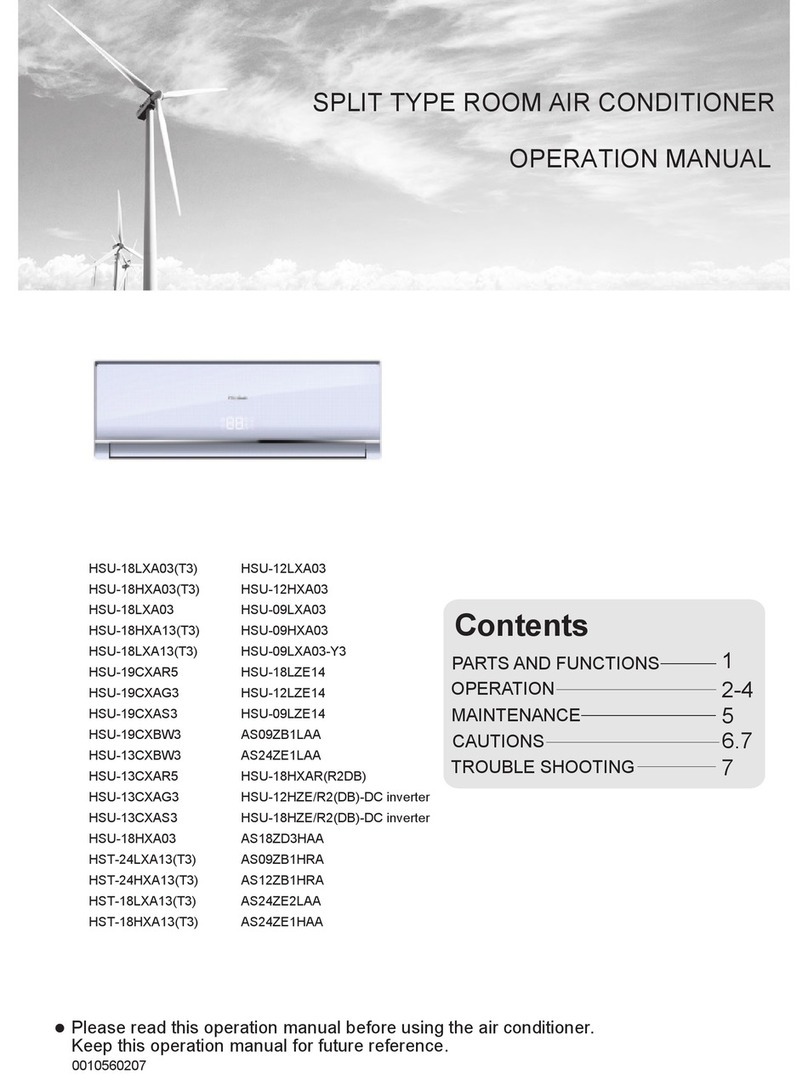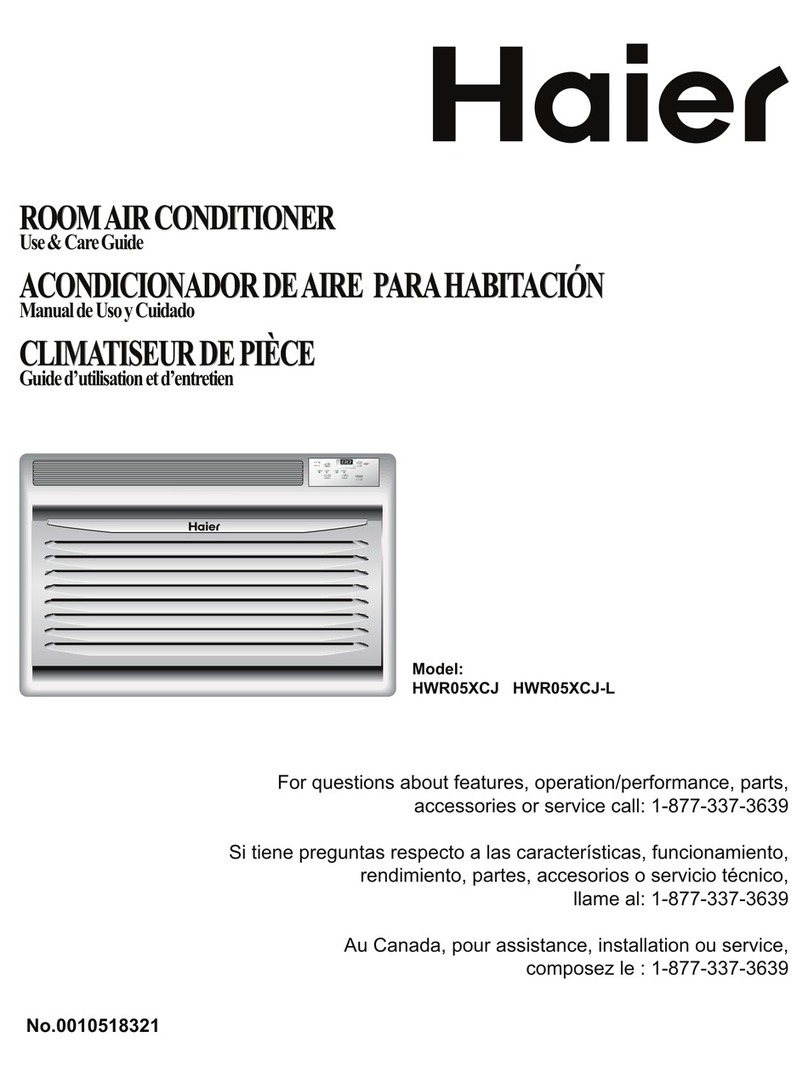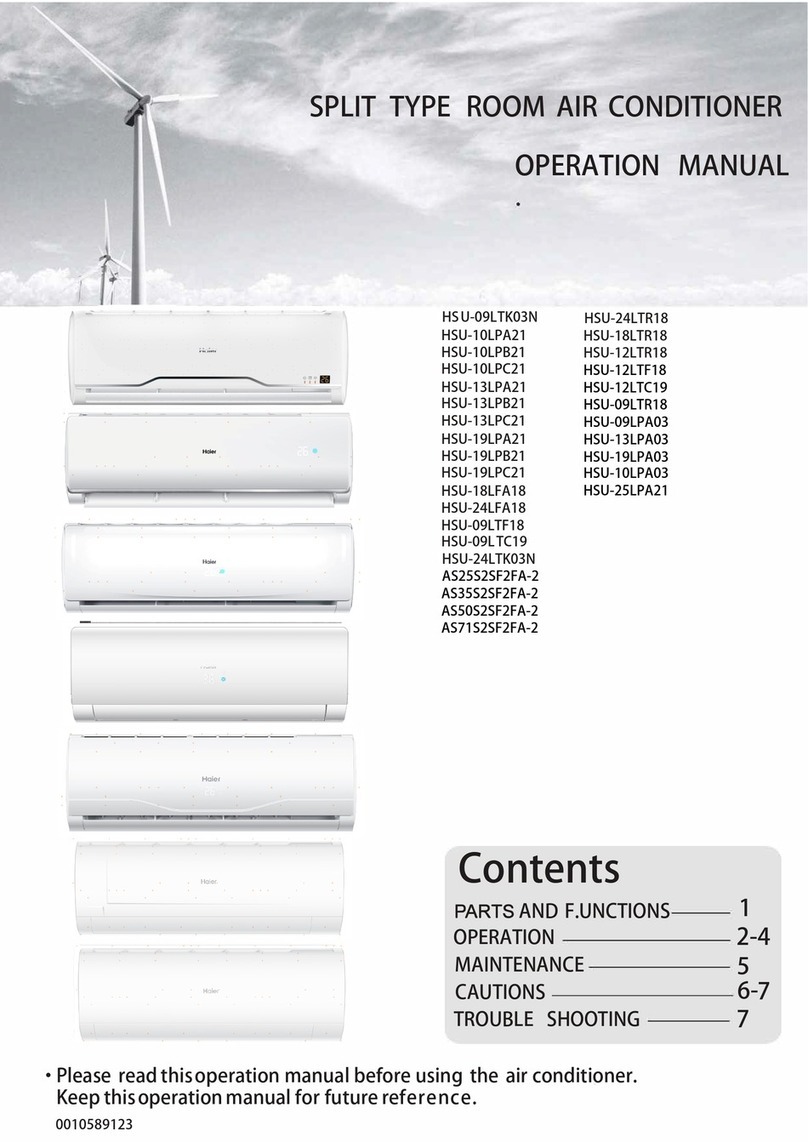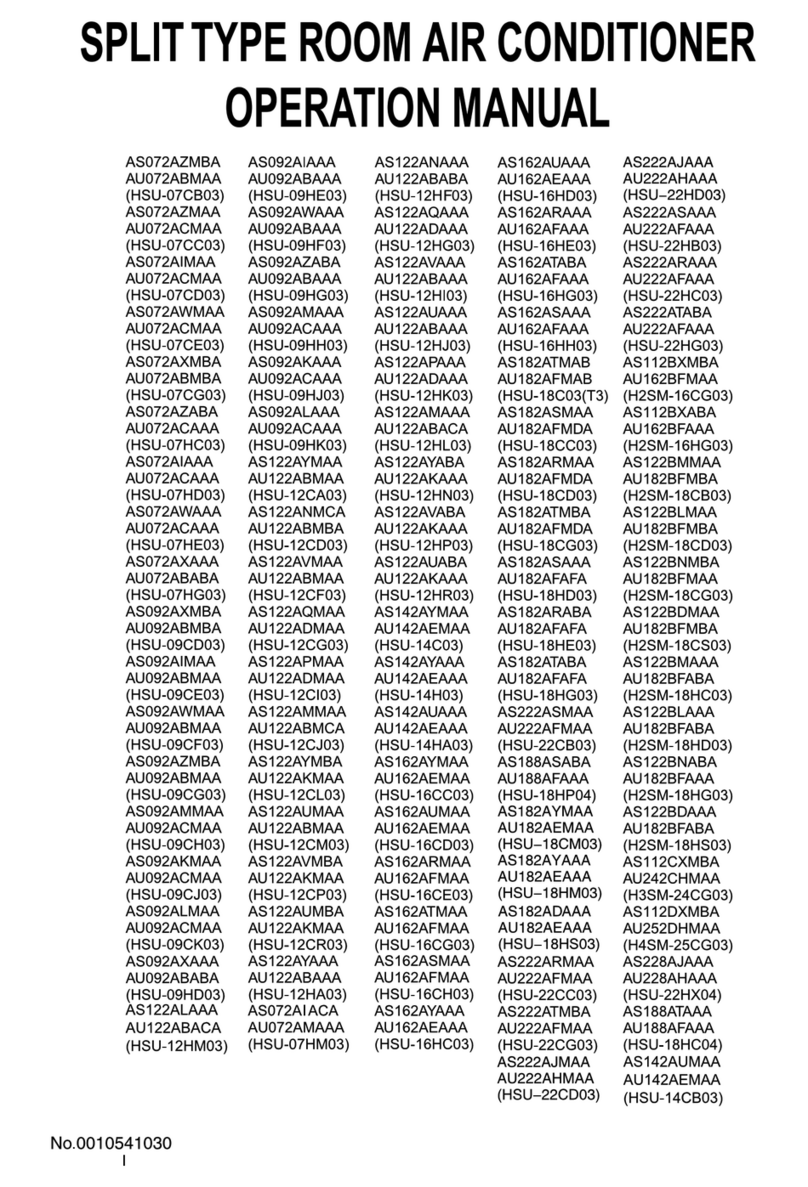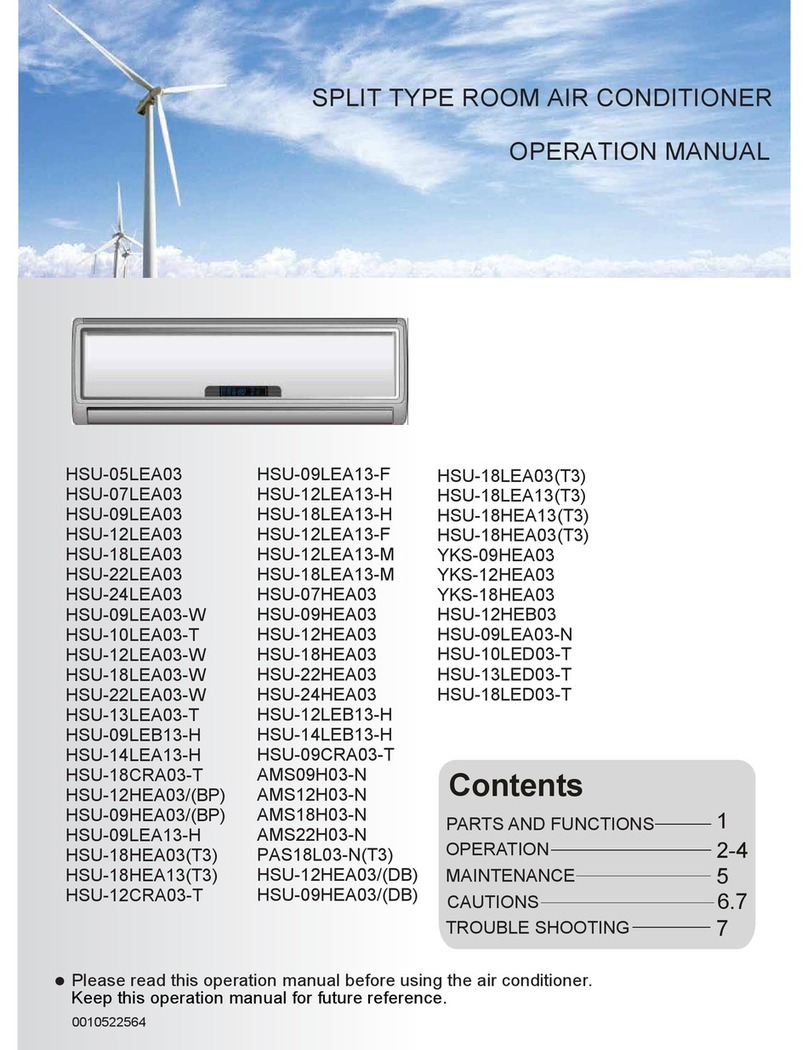
7
DANGER: DO NOT TOUCH PIPING
ANDINTERNAL PARTS
Do not touch the refrigerant piping, water piping or
internal parts during and immediately after operation.
The piping and internal parts may be hot or cold
depending on the working condition of the unit.
Your hand may suffer burns or frostbite if you touch
the piping or internal parts. To avoid injury, give the
piping and internal parts time to return to normal
temperature or, if you must touch them, be sure to
wear protective gloves.
Warning:
Ask your dealer or qualied personnel to carry out
installation work. Do not install the machine by
yourself. Improper installation may result in water
leakage, electric shocks or re.
Perform installation work in accordance with this
installation manual.
Improper installation may lead to water leakage,
electric shocks or re.
The equipment is not intended for use in a potentially
explosive atmosphere.
For 1UH series units only.
For year round cooling applications with low indoor
humidity conditions, such as Electronic Data
Processing rooms, contacet yout dealer or see the
engineering databook or the service manual.
Consult your local dealer regarding what to do in case
of refrigerant leakage. When the unit is to be installed in
a small room, it is necessary to take proper measures
so that the amount of any leaked refrigerant does not
exceed the concentration limit in the event of a leakage.
Otherwise, this may lead to an accident due to oxygen
depletion.
Be sure to use only the specied accessories and
parts for installation work.
Failure to use the specied parts may result in water
leakage, electric shocks, re, or the unit falling.
Install the unit on a foundation that can withstand its
weight.
Insufcient strength may result in the fall of equipment
and causing injury.
Carry out the specied installation work in consideration
of strong winds, typhoons, or earthquakes.
Improper installation work may result in accidents due
to fall of equipment.
Make sure that all electrical work is carried out by
qualied personnel according to the applicable legislation
and this installation manual, using a separate circuit.
Insufcient capacity of the power supply circuit or
improper electrical capacity of the power supply
circuit or improper electrical construction may lead to
electric shocks or re.
Make sure that all wiring is secure, using the specied
wires and ensuring that external forces do not act on
the terminal connections or wires.
Incomplete connection or xing may cause a re.
When wiring between the indoor and outdoor units,
and wiring the power supply, form the wires so that
the fronstside panel can be securely fastened.
If the frontside panel is not in place, overheating of
the terminals, electric shocks or a re may be caused.
If refrigerant gas leaks during installation work,
ventilate the area immediately.
Toxic gas may be produced if refrigerant gas comes
into contactwith re.
After completing the installation work, check to make
sure that there is no leakage of refrigerant gas.
Toxic gas may be produced if refrigerant gas leaks
into the room and comes into contact with a source of
re, such as a fan heater, stove or cooker.
When planning to relocate former installed units, you
must rst recover the refrigerant after the pump down
operation.
Never directly touch any accidental leaking refrigerant.
This could result in severe wounds caused by frostbite.
Be sure to install an earth leakage circuit breaker in
accordance with applicable legislation. Failure to do so
may cause electrical shock and re.
Caution:
Earth the unit.
Earthing resistance should be according to applicable
legislation.
Do not connect the earth wire to gas or water pipes,
lightning conductor or telephone earth wire.
Incomplete earthing may cause electric shocks.
Gas pipe.
Lgnition or explosion may occur if the gas leaks. Water
pipe.
Hard vinyl tubes are not effective earths. Lightning
conductor or telephone earth wire. Electric potential
may rise abnormally if struck by a lightning bolt.
Install drain piping according to this installation manual
to ensure good drainage, and insulate the pipe to
prevent condensation.
Improper drain piping may cause water leakage, and
make the fumitures get wet.
Install the indoor and outdoor units, power wire and
connecting wire at least 1 meter away from televisions
or radios to prevent image interference or noise.
(Depending on the radio waves, a distance of 1 meter
may not be sufcient to eliminate the noise.)
Do not rinse the outdoor unit, This may cause electric
shocks or re.
Do not install the unit in places such as the following:
Where there is mist of mineral oil, oil spray or vapour
for example a kitchen.
Plastic parts may deteriorate, and cause them to fall
out or water to leak.
